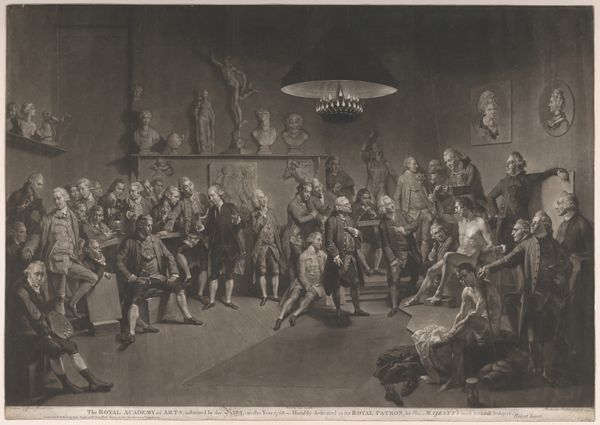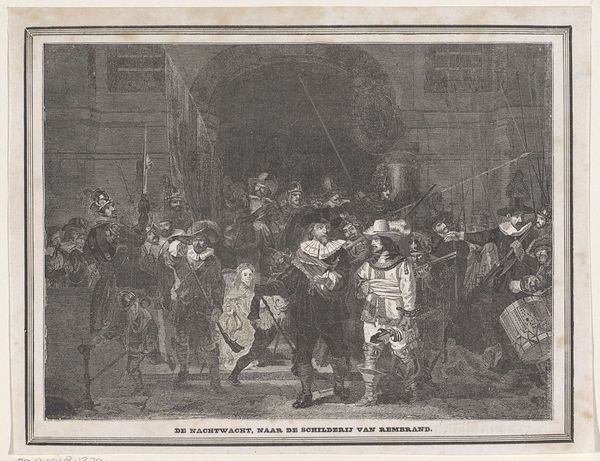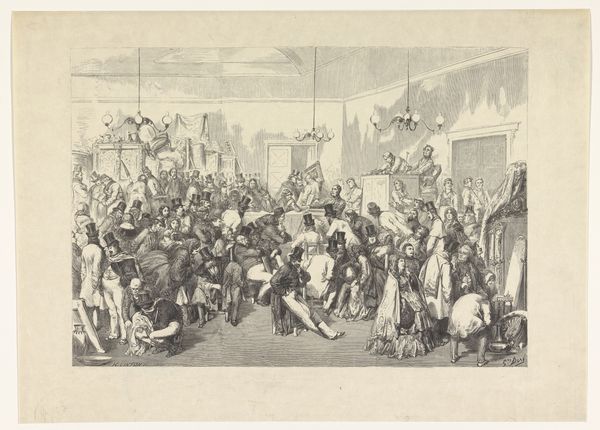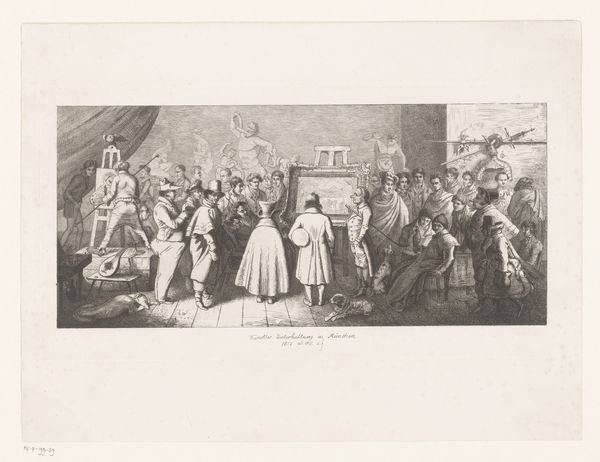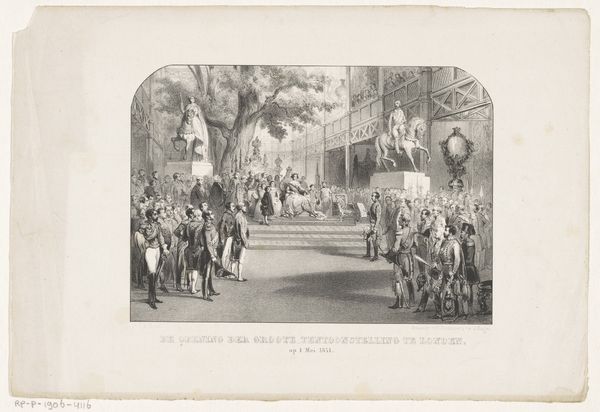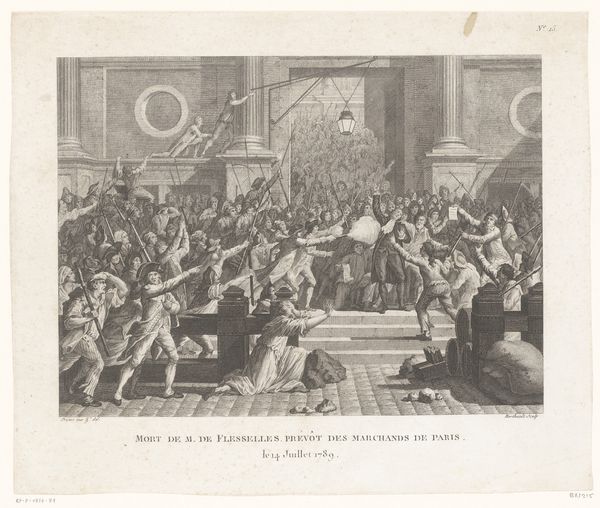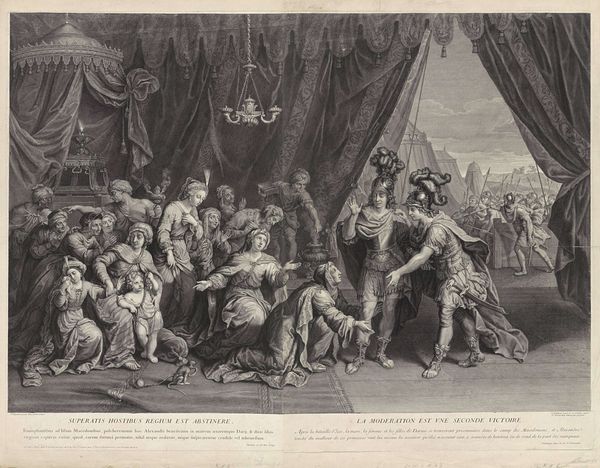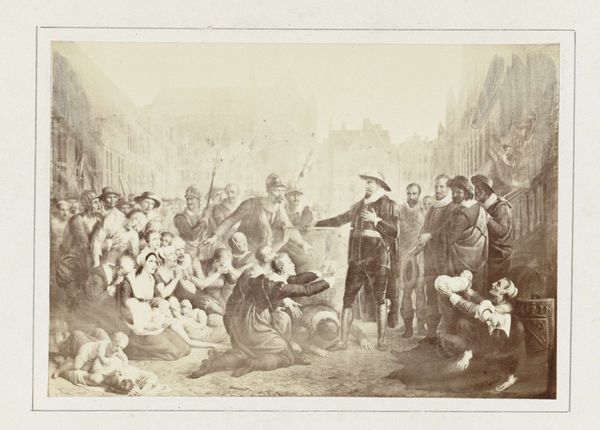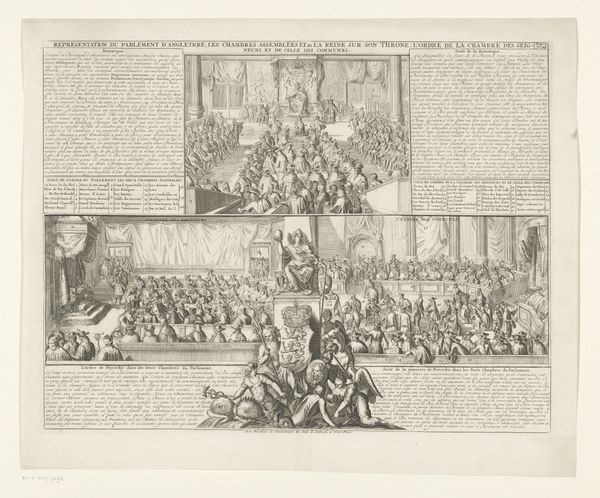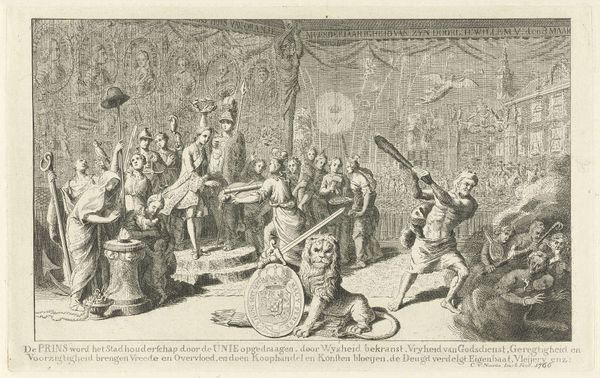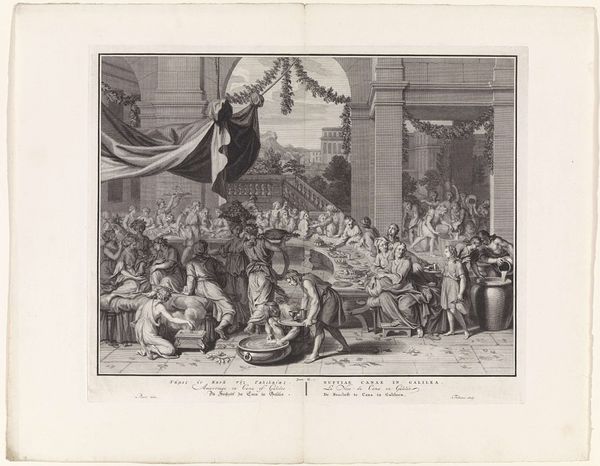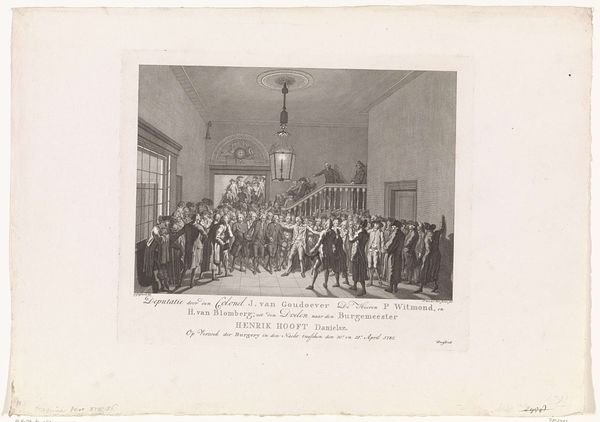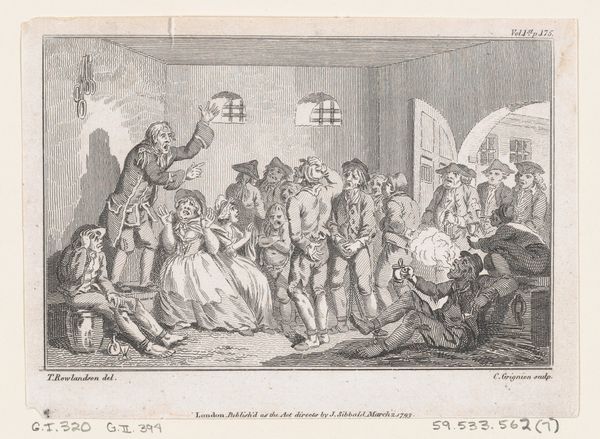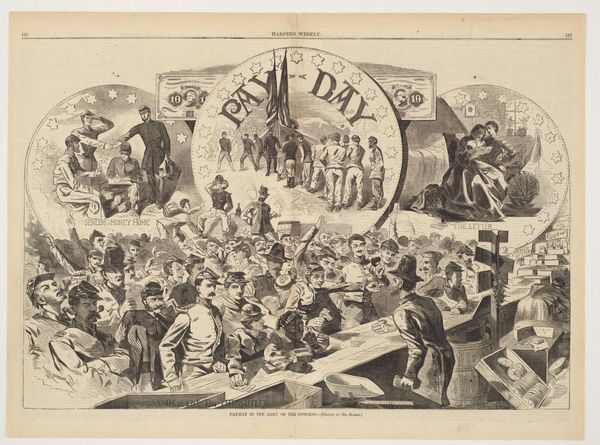
Portraits des premiers fondateurs de l'Académie Anglaise des Beaux-Arts (Portraits of the founding members of the Royal Academy of Arts, London), from "L'Univers Illustré" 1862
0:00
0:00
drawing, print, sculpture, engraving
#
portrait
#
drawing
# print
#
sculpture
#
men
#
history-painting
#
academic-art
#
engraving
Dimensions: Image: 9 1/4 × 13 9/16 in. (23.5 × 34.5 cm) Sheet: 10 1/2 × 15 1/4 in. (26.7 × 38.8 cm)
Copyright: Public Domain
Editor: Here we have "Portraits des premiers fondateurs de l'Académie Anglaise des Beaux-Arts" from 1862, a drawing turned into a print by Mason Jackson, which can be found at the Metropolitan Museum. It's amazing how much detail is captured in this black-and-white image of the Royal Academy! There's a wonderful, albeit busy, visual texture to the composition that seems almost overwhelming at first glance. What strikes you most about this print? Curator: Immediately, I am drawn to the structured chaos within the frame. Note the artist's strategic deployment of linear perspective, guiding the eye through the throng of figures and culminating in the statues displayed along the back. Consider how the interplay between light and shadow—evident in the drapery and the human form—contributes to the piece's spatial complexity. The image plane is carefully organised into a series of overlapping and interlocking volumes which are only minimally shaded. Editor: So, the balance is within the perspective and the distribution of the figures and forms? I didn't initially think about the statues adding another layer. Curator: Precisely. Note how the sculptures echo and amplify the postures of the living figures, almost mirroring them. What meaning might derive from this doubling, do you think? And might there also be symbolism at work here? Editor: Maybe it's a statement on how art imitates life? And the dog in the foreground creates another parallel, perhaps about class or the position of the viewer themselves. I see a deliberate structure now that you mention it! Curator: Exactly. By looking closely at the formal composition, and its interrelations of volumes and themes, we can arrive at fresh perspectives on what is depicted, as well as the structures used to depict it. Editor: I’m definitely going to look closer at artworks from this period with a more critical eye to appreciate these structural elements and historical references.
Comments
No comments
Be the first to comment and join the conversation on the ultimate creative platform.
